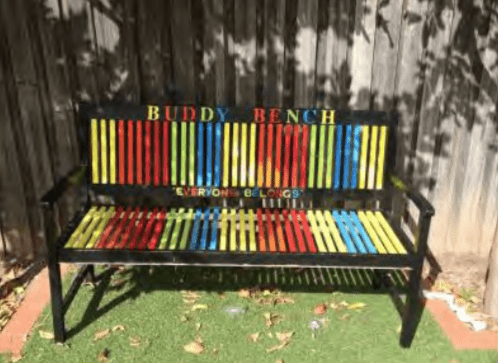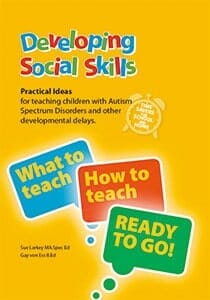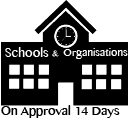<!-- AWeber Web Form Generator 3.0.1 --><!-- [et_pb_line_break_holder] --><style type="text/css"><!-- [et_pb_line_break_holder] -->#af-form-333522095 .af-body .af-textWrap{width:70%;display:block;float:right;}<!-- [et_pb_line_break_holder] -->#af-form-333522095 .af-body a{color:#29BFD9;text-decoration:underline;font-style:normal;font-weight:normal;}<!-- [et_pb_line_break_holder] -->#af-form-333522095 .af-body input.text, #af-form-333522095 .af-body textarea{background-color:#FFFFFF;border-color:#29BFD9;border-width:1px;border-style:solid;color:#000000;text-decoration:none;font-style:normal;font-weight:normal;font-size:12px;font-family:Verdana, sans-serif;}<!-- [et_pb_line_break_holder] -->#af-form-333522095 .af-body input.text:focus, #af-form-333522095 .af-body textarea:focus{background-color:#D6FEFF;border-color:#030303;border-width:1px;border-style:solid;}<!-- [et_pb_line_break_holder] -->#af-form-333522095 .af-body label.previewLabel{display:block;float:left;width:25%;text-align:left;color:#13586B;text-decoration:none;font-style:normal;font-weight:normal;font-size:12px;font-family:Verdana, sans-serif;}<!-- [et_pb_line_break_holder] -->#af-form-333522095 .af-body{padding-bottom:15px;padding-top:15px;background-repeat:no-repeat;background-position:inherit;background-image:none;color:#FFFFFF;font-size:11px;font-family:Verdana, sans-serif;}<!-- [et_pb_line_break_holder] -->#af-form-333522095 .af-footer{padding-bottom:0px;padding-top:0px;padding-right:15px;padding-left:15px;background-color:#transparent;border-width:1px;border-bottom-style:none;border-left-style:none;border-right-style:none;border-top-style:none;color:#FFFFFF;font-size:12px;font-family:Verdana, sans-serif;}<!-- [et_pb_line_break_holder] -->#af-form-333522095 .af-header{padding-bottom:9px;padding-top:9px;padding-right:10px;padding-left:10px;background-image:url('https://forms.aweber.com/images/auto/body/27d/7ff/178/199');background-position:top left;background-repeat:repeat-x;background-color:#178199;border-width:1px;border-bottom-style:none;border-left-style:none;border-right-style:none;border-top-style:none;color:#FFFFFF;font-size:16px;font-family:Verdana, sans-serif;}<!-- [et_pb_line_break_holder] -->#af-form-333522095 .af-quirksMode .bodyText{padding-top:2px;padding-bottom:2px;}<!-- [et_pb_line_break_holder] -->#af-form-333522095 .af-quirksMode{padding-right:15px;padding-left:15px;}<!-- [et_pb_line_break_holder] -->#af-form-333522095 .af-standards .af-element{padding-right:15px;padding-left:15px;}<!-- [et_pb_line_break_holder] -->#af-form-333522095 .bodyText p{margin:1em 0;}<!-- [et_pb_line_break_holder] -->#af-form-333522095 .buttonContainer input.submit{background-image:url("https://forms.aweber.com/images/auto/gradient/button/2bd.png");background-position:top left;background-repeat:repeat-x;background-color:#029bbd;border:1px solid #029bbd;color:#FFFFFF;text-decoration:none;font-style:normal;font-weight:normal;font-size:18px;font-family:Verdana, sans-serif;}<!-- [et_pb_line_break_holder] -->#af-form-333522095 .buttonContainer input.submit{width:auto;}<!-- [et_pb_line_break_holder] -->#af-form-333522095 .buttonContainer{text-align:left;}<!-- [et_pb_line_break_holder] -->#af-form-333522095 body,#af-form-333522095 dl,#af-form-333522095 dt,#af-form-333522095 dd,#af-form-333522095 h1,#af-form-333522095 h2,#af-form-333522095 h3,#af-form-333522095 h4,#af-form-333522095 h5,#af-form-333522095 h6,#af-form-333522095 pre,#af-form-333522095 code,#af-form-333522095 fieldset,#af-form-333522095 legend,#af-form-333522095 blockquote,#af-form-333522095 th,#af-form-333522095 td{float:none;color:inherit;position:static;margin:0;padding:0;}<!-- [et_pb_line_break_holder] -->#af-form-333522095 button,#af-form-333522095 input,#af-form-333522095 submit,#af-form-333522095 textarea,#af-form-333522095 select,#af-form-333522095 label,#af-form-333522095 optgroup,#af-form-333522095 option{float:none;position:static;margin:0;}<!-- [et_pb_line_break_holder] -->#af-form-333522095 div{margin:0;}<!-- [et_pb_line_break_holder] -->#af-form-333522095 fieldset{border:0;}<!-- [et_pb_line_break_holder] -->#af-form-333522095 form,#af-form-333522095 textarea,.af-form-wrapper,.af-form-close-button,#af-form-333522095 img{float:none;color:inherit;position:static;background-color:none;border:none;margin:0;padding:0;}<!-- [et_pb_line_break_holder] -->#af-form-333522095 input,#af-form-333522095 button,#af-form-333522095 textarea,#af-form-333522095 select{font-size:100%;}<!-- [et_pb_line_break_holder] -->#af-form-333522095 p{color:inherit;}<!-- [et_pb_line_break_holder] -->#af-form-333522095 select,#af-form-333522095 label,#af-form-333522095 optgroup,#af-form-333522095 option{padding:0;}<!-- [et_pb_line_break_holder] -->#af-form-333522095 table{border-collapse:collapse;border-spacing:0;}<!-- [et_pb_line_break_holder] -->#af-form-333522095 ul,#af-form-333522095 ol{list-style-image:none;list-style-position:outside;list-style-type:disc;padding-left:40px;}<!-- [et_pb_line_break_holder] -->#af-form-333522095,#af-form-333522095 .quirksMode{width:100%;max-width:590px;}<!-- [et_pb_line_break_holder] -->#af-form-333522095.af-quirksMode{overflow-x:hidden;}<!-- [et_pb_line_break_holder] -->#af-form-333522095{background-color:#FFFFFF;border-color:#3D393D;border-width:1px;border-style:solid;}<!-- [et_pb_line_break_holder] -->#af-form-333522095{display:block;}<!-- [et_pb_line_break_holder] -->#af-form-333522095{overflow:hidden;}<!-- [et_pb_line_break_holder] -->.af-body .af-textWrap{text-align:left;}<!-- [et_pb_line_break_holder] -->.af-body input.image{border:none!important;}<!-- [et_pb_line_break_holder] -->.af-body input.submit,.af-body input.image,.af-form .af-element input.button{float:none!important;}<!-- [et_pb_line_break_holder] -->.af-body input.text{width:100%;float:none;padding:2px!important;}<!-- [et_pb_line_break_holder] -->.af-body.af-standards input.submit{padding:4px 12px;}<!-- [et_pb_line_break_holder] -->.af-clear{clear:both;}<!-- [et_pb_line_break_holder] -->.af-element label{text-align:left;display:block;float:left;}<!-- [et_pb_line_break_holder] -->.af-element{padding-bottom:5px;padding-top:5px;}<!-- [et_pb_line_break_holder] -->.af-form-wrapper{text-indent:0;}<!-- [et_pb_line_break_holder] -->.af-form{text-align:left;margin:auto;}<!-- [et_pb_line_break_holder] -->.af-header,.af-footer{margin-bottom:0;margin-top:0;padding:10px;}<!-- [et_pb_line_break_holder] -->.af-quirksMode .af-element{padding-left:0!important;padding-right:0!important;}<!-- [et_pb_line_break_holder] -->.lbl-right .af-element label{text-align:right;}<!-- [et_pb_line_break_holder] -->body {<!-- [et_pb_line_break_holder] -->}<!-- [et_pb_line_break_holder] --><!-- [et_pb_line_break_holder] --></style><!-- [et_pb_line_break_holder] --><form method="post" class="af-form-wrapper" accept-charset="UTF-8" action="https://www.aweber.com/scripts/addlead.pl" ><!-- [et_pb_line_break_holder] --><div style="display: none;"><!-- [et_pb_line_break_holder] --><input type="hidden" name="meta_web_form_id" value="333522095" /><!-- [et_pb_line_break_holder] --><input type="hidden" name="meta_split_id" value="" /><!-- [et_pb_line_break_holder] --><input type="hidden" name="listname" value="suelarkey" /><!-- [et_pb_line_break_holder] --><input type="hidden" name="redirect" value="https://www.aweber.com/thankyou-coi.htm?m=text" id="redirect_4be5febdfbf1e9bc91d01baebe1f0cf0" /><!-- [et_pb_line_break_holder] --><!-- [et_pb_line_break_holder] --><input type="hidden" name="meta_adtracking" value="2018_Newsletter_signup_for_blog_posts_with_free_ebooks" /><!-- [et_pb_line_break_holder] --><input type="hidden" name="meta_message" value="1001" /><!-- [et_pb_line_break_holder] --><input type="hidden" name="meta_required" value="name,email" /><!-- [et_pb_line_break_holder] --><!-- [et_pb_line_break_holder] --><input type="hidden" name="meta_tooltip" value="" /><!-- [et_pb_line_break_holder] --></div><!-- [et_pb_line_break_holder] --><div id="af-form-333522095" class="af-form"><div id="af-header-333522095" class="af-header"><div class="bodyText"><p><span style="font-size: 13px;">Signup for to our free and EXCLUSIVE to subscribers only e-newsletter and as a bonus after confirming your email address you will recieve:</span></p><!-- [et_pb_line_break_holder] --><p><span style="font-size: 16px;">A free 36 minute video with more great information from Sue!</span></p></div></div><!-- [et_pb_line_break_holder] --><div id="af-body-333522095" class="af-body af-standards"><!-- [et_pb_line_break_holder] --><div class="af-element"><!-- [et_pb_line_break_holder] --><label class="previewLabel" for="awf_field-97550635">Name: </label><!-- [et_pb_line_break_holder] --><div class="af-textWrap"><!-- [et_pb_line_break_holder] --><input id="awf_field-97550635" type="text" name="name" class="text" value="" onfocus=" if (this.value == '') { this.value = ''; }" onblur="if (this.value == '') { this.value='';} " tabindex="500" /><!-- [et_pb_line_break_holder] --></div><!-- [et_pb_line_break_holder] --><div class="af-clear"></div></div><!-- [et_pb_line_break_holder] --><div class="af-element"><!-- [et_pb_line_break_holder] --><label class="previewLabel" for="awf_field-97550636">Email: </label><!-- [et_pb_line_break_holder] --><div class="af-textWrap"><input class="text" id="awf_field-97550636" type="text" name="email" value="" tabindex="501" onfocus=" if (this.value == '') { this.value = ''; }" onblur="if (this.value == '') { this.value='';} " /><!-- [et_pb_line_break_holder] --></div><div class="af-clear"></div><!-- [et_pb_line_break_holder] --></div><!-- [et_pb_line_break_holder] --><div class="af-element buttonContainer"><!-- [et_pb_line_break_holder] --><input name="submit" class="submit" type="submit" value="Sign up" tabindex="502" /><!-- [et_pb_line_break_holder] --><div class="af-clear"></div><!-- [et_pb_line_break_holder] --></div><!-- [et_pb_line_break_holder] --><div class="af-element tag" style="display:none;"><input id="awf_tag-97550638" type="hidden" name="tag_97550638" value="blog" /></div><!-- [et_pb_line_break_holder] --></div><!-- [et_pb_line_break_holder] --><div id="af-footer-333522095" class="af-footer"><div class="bodyText"><p> </p></div></div><!-- [et_pb_line_break_holder] --></div><!-- [et_pb_line_break_holder] --><div style="display: none;"><img src="https://forms.aweber.com/form/displays.htm?id=zMzMrExMDJys" alt="" /></div><!-- [et_pb_line_break_holder] --></form><!-- [et_pb_line_break_holder] --><script type="text/javascript"><!-- [et_pb_line_break_holder] -->// Special handling for facebook iOS since it cannot open new windows<!-- [et_pb_line_break_holder] -->(function() {<!-- [et_pb_line_break_holder] --> if (navigator.userAgent.indexOf('FBIOS') !== -1 || navigator.userAgent.indexOf('Twitter for iPhone') !== -1) {<!-- [et_pb_line_break_holder] --> document.getElementById('af-form-333522095').parentElement.removeAttribute('target');<!-- [et_pb_line_break_holder] --> }<!-- [et_pb_line_break_holder] -->})();<!-- [et_pb_line_break_holder] --></script><script type="text/javascript"><!-- [et_pb_line_break_holder] --> <!--<!-- [et_pb_line_break_holder] --> (function() {<!-- [et_pb_line_break_holder] --> var IE = /*@cc_on!@*/false;<!-- [et_pb_line_break_holder] --> if (!IE) { return; }<!-- [et_pb_line_break_holder] --> if (document.compatMode && document.compatMode == 'BackCompat') {<!-- [et_pb_line_break_holder] --> if (document.getElementById("af-form-333522095")) {<!-- [et_pb_line_break_holder] --> document.getElementById("af-form-333522095").className = 'af-form af-quirksMode';<!-- [et_pb_line_break_holder] --> }<!-- [et_pb_line_break_holder] --> if (document.getElementById("af-body-333522095")) {<!-- [et_pb_line_break_holder] --> document.getElementById("af-body-333522095").className = "af-body inline af-quirksMode";<!-- [et_pb_line_break_holder] --> }<!-- [et_pb_line_break_holder] --> if (document.getElementById("af-header-333522095")) {<!-- [et_pb_line_break_holder] --> document.getElementById("af-header-333522095").className = "af-header af-quirksMode";<!-- [et_pb_line_break_holder] --> }<!-- [et_pb_line_break_holder] --> if (document.getElementById("af-footer-333522095")) {<!-- [et_pb_line_break_holder] --> document.getElementById("af-footer-333522095").className = "af-footer af-quirksMode";<!-- [et_pb_line_break_holder] --> }<!-- [et_pb_line_break_holder] --> }<!-- [et_pb_line_break_holder] --> })();<!-- [et_pb_line_break_holder] --> --><!-- [et_pb_line_break_holder] --></script><!-- [et_pb_line_break_holder] --><!-- [et_pb_line_break_holder] --><!-- /AWeber Web Form Generator 3.0.1 -->



 For all orders outside Australia please email
For all orders outside Australia please email 